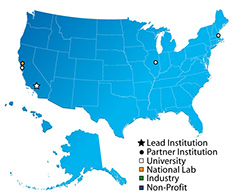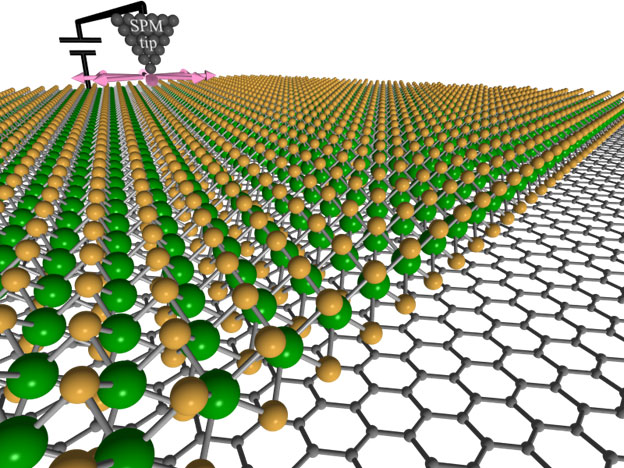Light-Material Interactions in Energy Conversion (LMI)

Director
Ralph Nuzzo
Lead Institution
California Institute of Technology
Year Established
2009
Mission
To tailor the morphology, complex dielectric structure, and electronic properties of matter so as to sculpt the flow of sunlight and heat, enabling light conversion to electrical energy with unprecedented efficiency.
Research Topics
solar (photovoltaic), solar (thermal), solid state lighting, phonons, thermal conductivity, defects, mechanical behavior, charge transport, optics, mesostructured materials, materials and chemistry by design, synthesis (novel materials), synthesis (self-assembly), synthesis (scalable processing)
Materials Studied
Materials: semiconductor, wide band-gap semiconductor, metal, oxide, polymer, ceramic, glass, rare earth elements, porous, optoelectronic and metamaterial, transparent conductor
Interfaces: organic/semiconductor, organic/oxide, organic/organic, organic/metal, metal/semiconductor, metal/oxide, semiconductor/semiconductor, solid/solid
Nanostructured Materials: 0D, 1D, 2D, 3D, nanocomposites
Experimental and Theoretical Methods
electron microscopy, scanning probe microscopy, near-field scanning optical microscopy, lithography, monte carlo (MC), quantum mechanics, continuum modeling, mesoscale modeling, finite element method, multiscale modeling, next generation optimization method

Partner Institutions
- California Institute of Technology
- Harvard University
- Lawrence Berkeley National Laboratory
- Stanford University
- University of Illinois Urbana-Champaign












